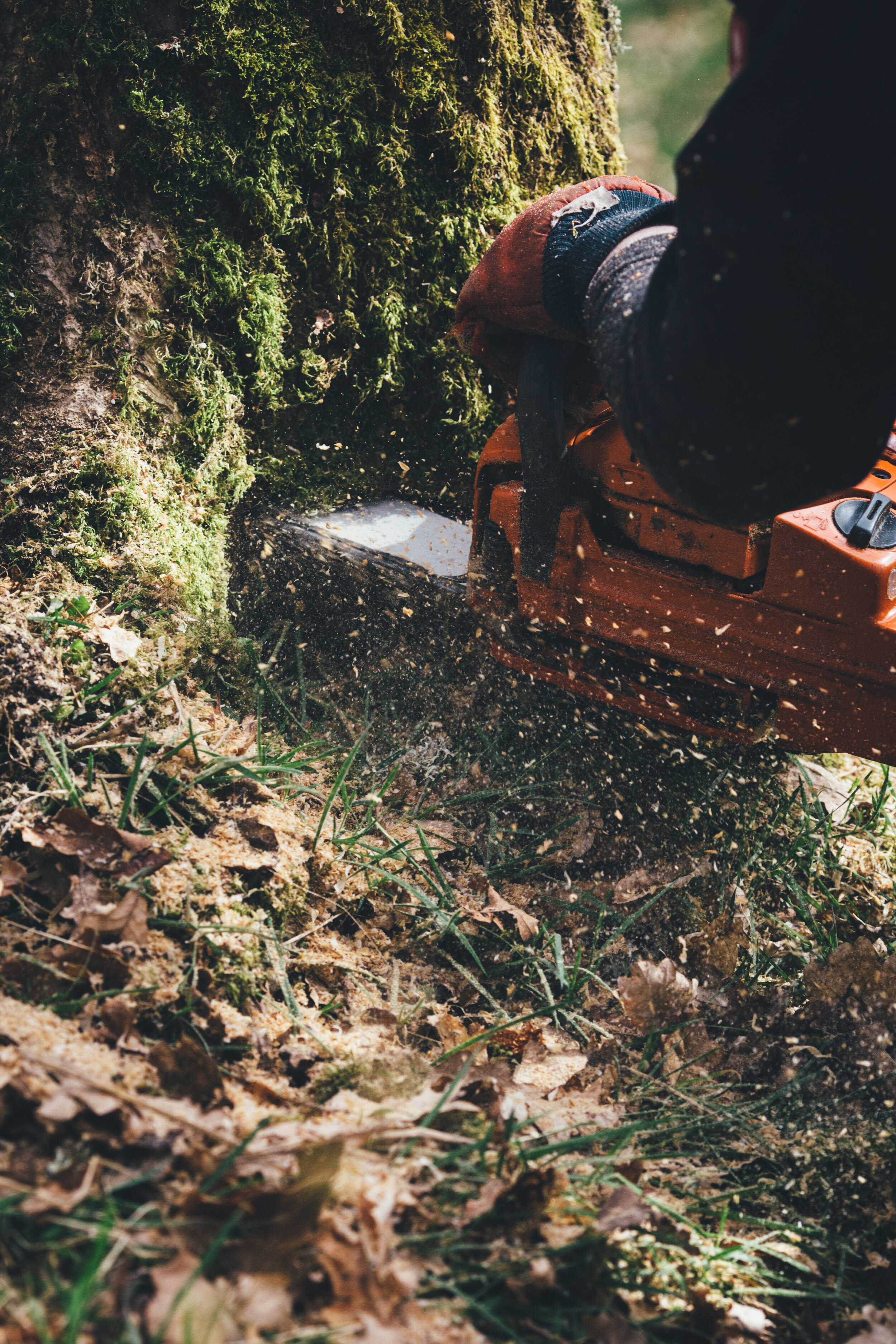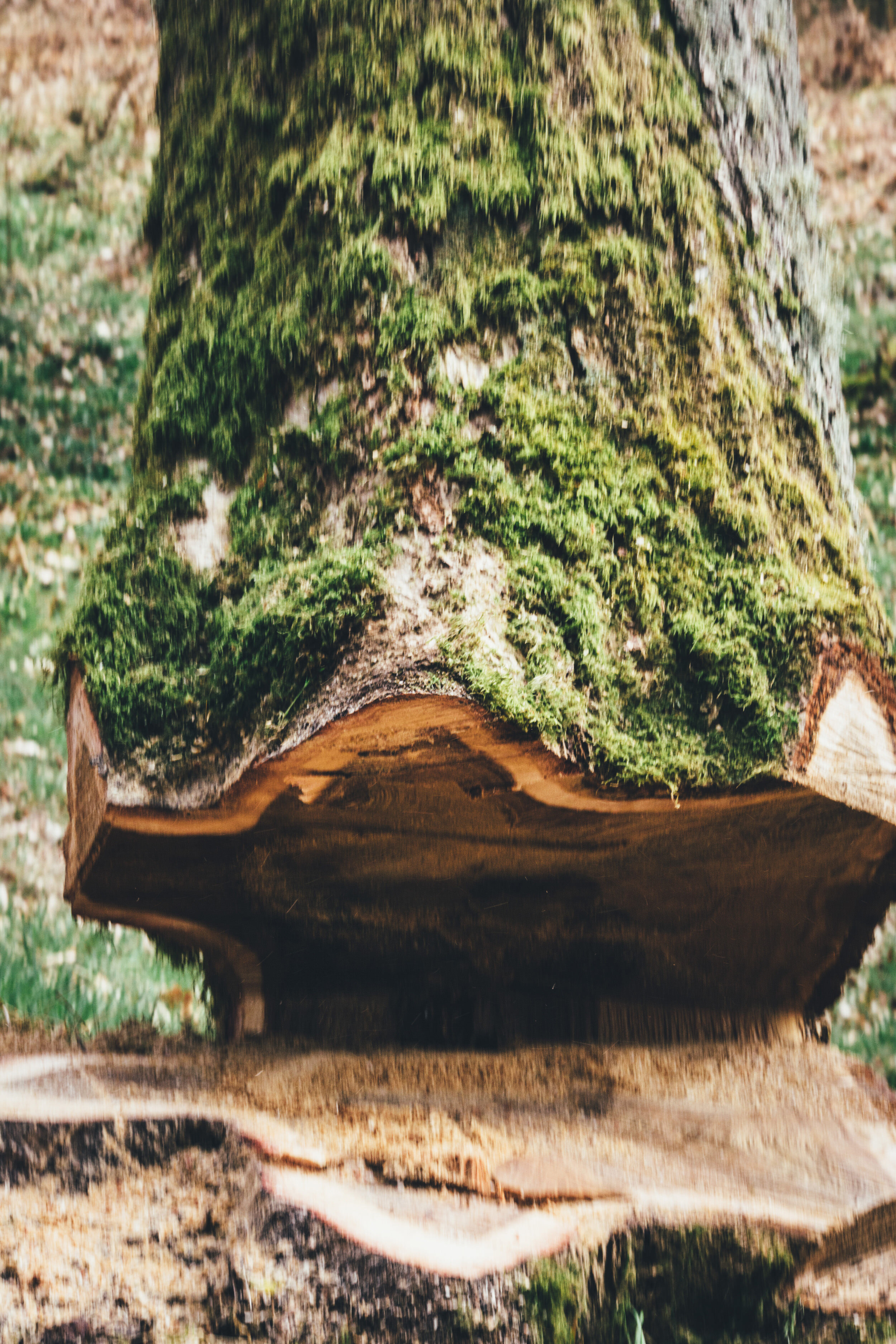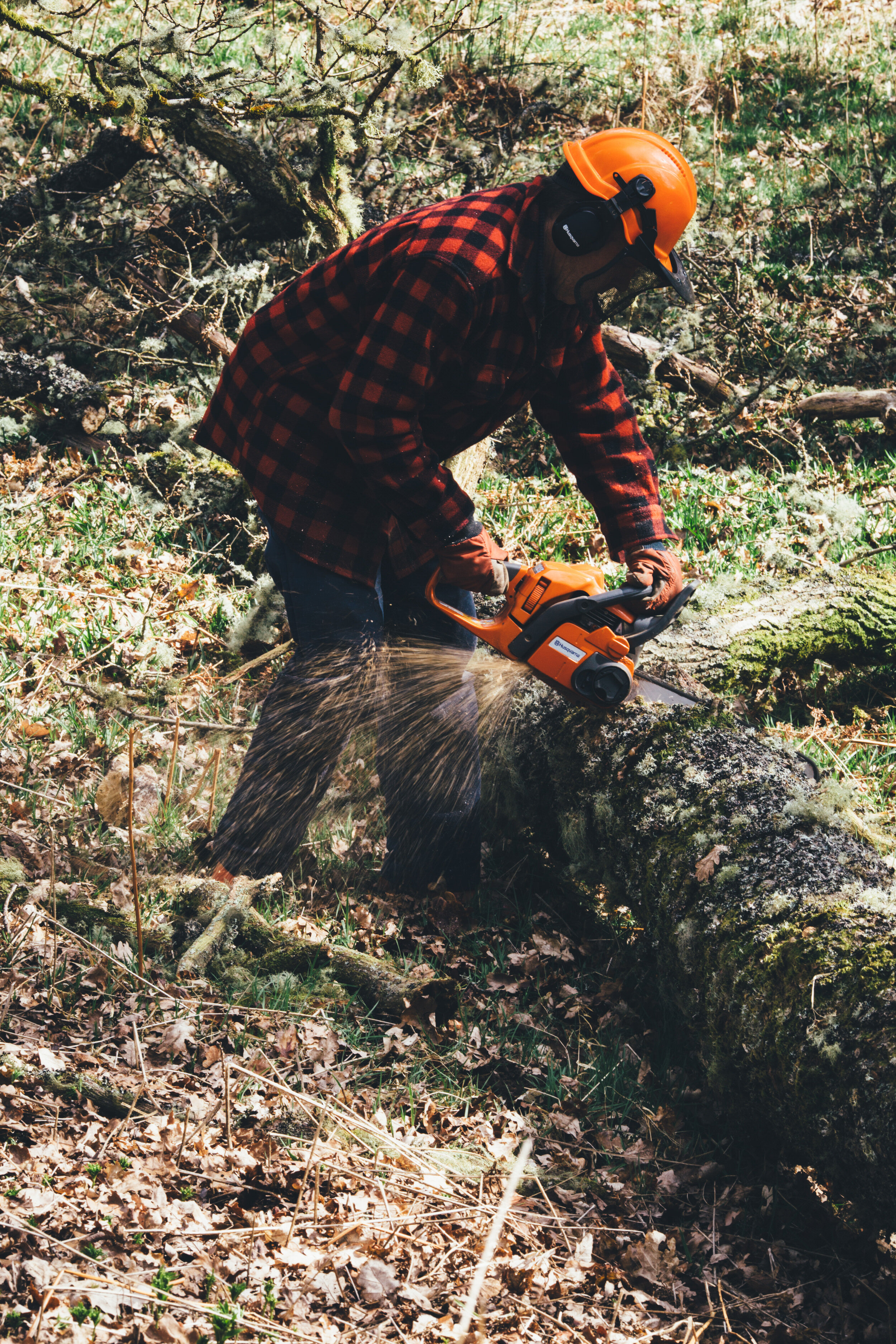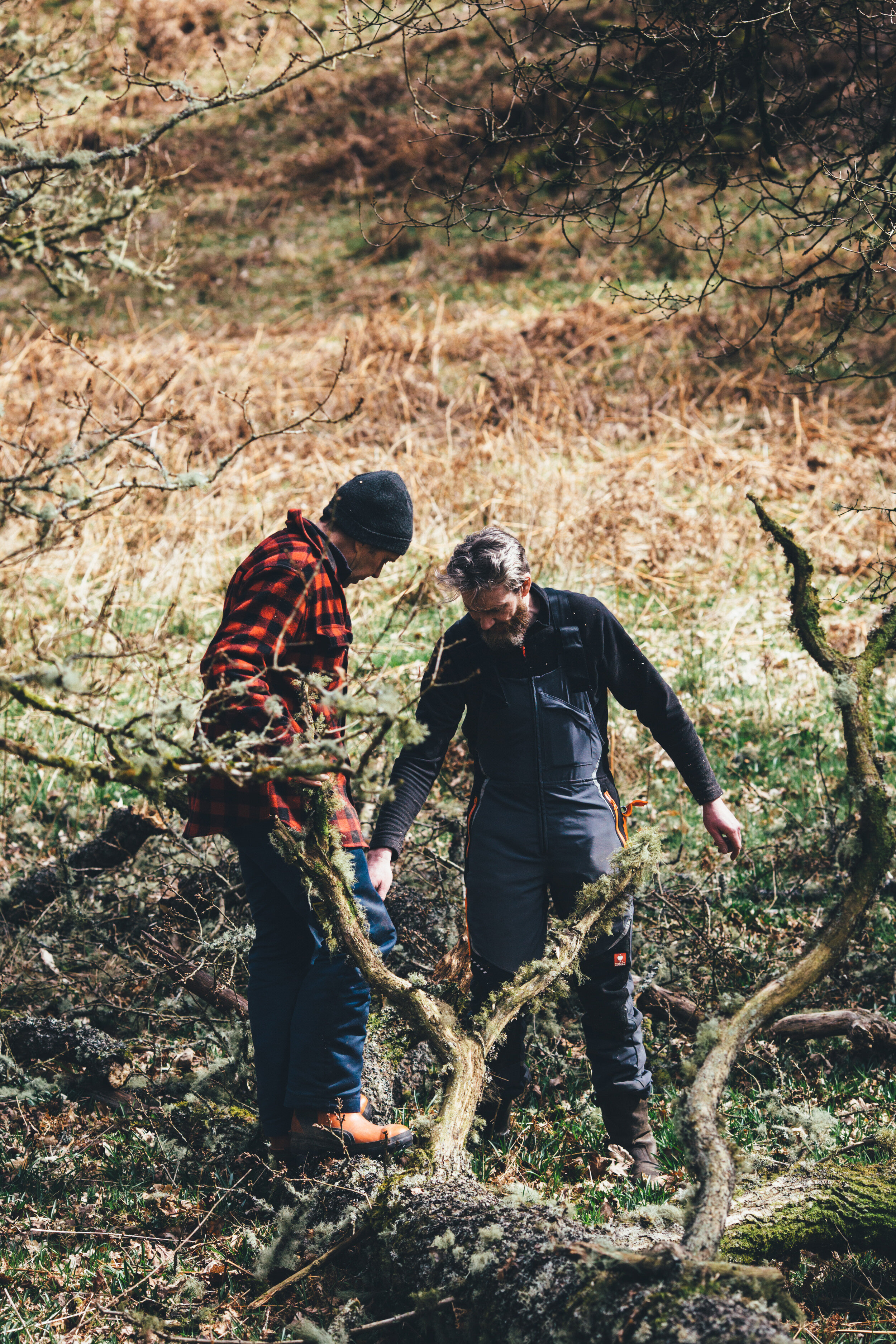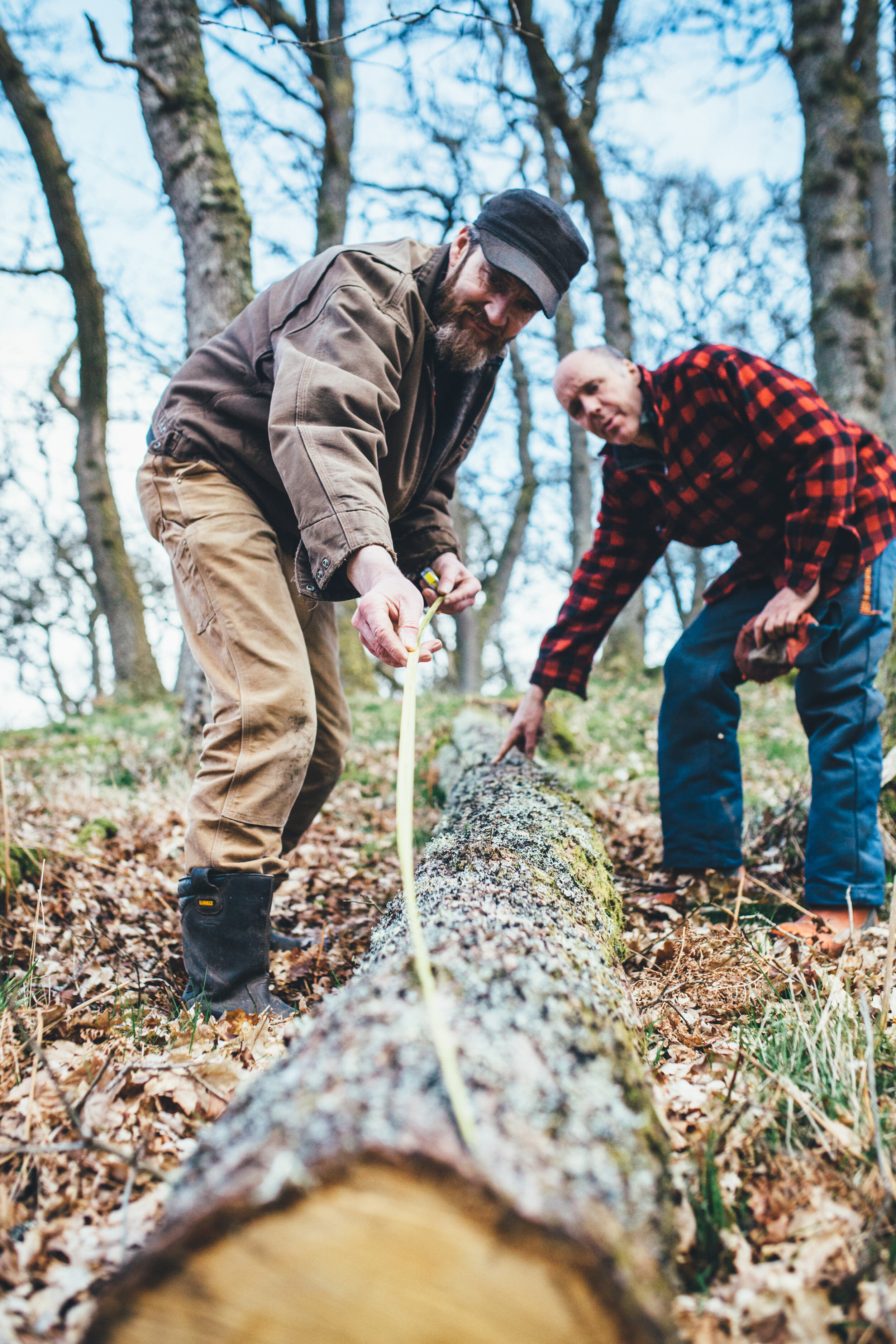Why We Fell Trees in an Ancient Native Woodland?
It may seem counter–intuitive but one of the best ways of improving a native woodland is felling trees. Our woodland is a beautiful mixed native woodland of 50 acres. It has a great number of veteran oak trees, planted well over a hundred years ago, perhaps even two hundred years and the trees were coppiced until the First World War. Tannin was extracted and used by the leather industry. After the war there was a dramatic decrease in the number of men working on the land, and this combined with a move to chemical processing in the leather industry, led to this oak wood being largely abandoned. The woodland is also cut-off by the railway track (now a foot-path) and the river and when our collective bought the wood in 2004 the ancient oak trees were over-crowded and deer were preventing regeneration of new trees.
Careful selective felling brings in light, helping the remaining trees to thrive, and results in greater bio-diversity of plants, fungi, insects, birds, bats and other creatures.
Perhaps surprisingly we are not selecting the ‘best’ trees for felling but planning for long-term improvement in the quality of the timber. Angus has found a ways to use spindly, gnarled and bent trees for fine furniture making. This rather unpromising starting point now provides us with unique timber and led to various innovations in our furniture making practise - particularly in our signature technique of steam-bending.
Felling starts with a good look at the trees. The decision about which few trees are felled each year is made with an extremely knowledgeable forester and native woodland specialist in our group: Rick Worrell.
This micro scale selective felling is very different to ‘clear fell’ which is felling on an industrial scale. This is the norm and will be the method for all mass produced ‘oak’ furniture. Please note that if ‘solid oak’ furniture is cheap and the source of timber has not been clearly stated it will be clear fell timber, not British and not our native oak species - Quercus robur.
Our Scottish woodland has the native oak ‘Quercus robur’. Our felled timber is used for fine furniture making where possible and the rest for firewood. Uniquely, as the timber is milled by Angus and Rick it can be assessed at the time whether to plank for steam-bending (straight grain) or plank for kiln-dried (interesting characterful grain pattern) and Angus can use small section characterful timber that would usually be allocated to firewood. We do all the processes from standing tree to finished fine furniture.
We also source timber from small scale timber yards specialising in Scottish hardwoods and are members of the Association of Scottish Sawmillers
We are licensees of the Scottish Working Woods label – http://www.scottishworkingwoods.org.uk which guarantees that our timber is local, ethical and sustainable.
All images in this blog post are by www.ciaramenzies.com.




